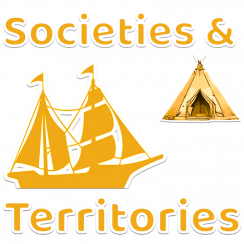In 1500, there were about 70 000 Algonquians in Eastern Canada. By comparing the size of the territory they occupied and their numbers, we can imagine they were scattered across their lands. It is difficult to know exactly how many Algonquian people there were. Why? Because they did not do censuses as we do today or as the Incas in South America did at that time.
A group of clans
The Algonquians were Indigenous peoples who shared similar languages, but who did not form a single, united group. They belonged to several nations. The nations that belonged to the Algonquian people had the same language, habits, nomadic way of life and culture. However, each nation was different in its own unique way. Each nation was made up of a few bands, which were groups of 35 to 75 people from two or three families. The following nations belong to the Algonquian language family: the Abenaki(W8banaki), the Algonquin (Anishinabeg), the Atikamekw, the Beothuk, the Eeyou (Cree), the Wolastoqiyik Wahsipekuk (Maliseet), the Mi’kmaq, the Nitassinan (Innu) and the Naskapi.
Note: We have tried to use the self-identified names of Indigenous Nations with communities in province Quebec. The name(s) that English and French settlers have used to refer to members of each Nation are in brackets. We encourage you to use and teach others the self-identified names of Indigenous Nations.
Important concepts & Big ideas[glossary slug=’population’]
[glossary slug=’populationdensity’]
[glossary slug=’territory’]
[glossary slug=’census’]
Clan or [glossary slug=’clansystem’]
[glossary slug=’nation’]
[glossary slug=’languagefamily’]
[glossary slug=’nomad’]



